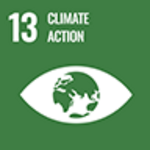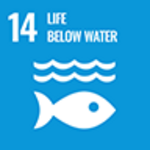
Associate ProfessorTomonori Isada
Affiliation: Field Science Center for Northern Biosphere, Akkeshi Marine Biological Station (Faculty of Science, School of Science of Biology (Biology))
Specialized field: Biological Oceanography
Research Keywords: Marine Microbes, Phytoplankton, Marine Ecosystem, Climate Change, Environmental Dynamics Analysis
Alma mater: Otaru Shioryo High School (Hokkaido)
Final academic background: Graduate School Graduate School of Environmental Science Hokkaido University
Website address:http://www.fsc.hokudai.ac.jp/akkeshi/
*This article was originally published in the 4th issue of "Frontiers of Knowledge" and has been re-edited for the web.
What are you aiming for?
Organic matter produced by photosynthesis by phytoplankton, one of the marine microorganisms, is the starting point of the food chain in the marine ecosystem. In addition, phytoplankton absorb carbon dioxide through photosynthesis, so accurately understanding where and what kind of phytoplankton appears and how much they are photosynthesizing (absorbing and fixing carbon dioxide) will contribute to future global warming. It is also extremely important in predicting climate change, including climate change. I am conducting research aiming to elucidate the marine ecosystem, especially in the Oyashio region, even in the vast ocean. The Oyashio Current is known to have one of the world's top-class capacities to absorb carbon dioxide from the atmosphere, and to be one of the world's three largest fishing grounds. The high photosynthetic capacity of phytoplankton in the Oyashio region is considered to be the main factor. Therefore, I aim to contribute to the future prediction of the Oyashio ecosystem by investigating the factors that control the distribution of phytoplankton and photosynthesis (environmental dynamics analysis).
What kind of observations and experiments are you doing?
On-site oceanographic observations are carried out on various large and small research vessels ranging from 10 ton to 4,000 ton class. Using a sensor that can instantly measure water temperature and salinity in the sea (left photo below) and a sensor that can measure the amount and wavelength of light that is important for phytoplankton (right photo below) to observe the marine environment. They also took seawater samples back to the laboratory to measure phytoplankton pigments using high-performance liquid chromatography (HPLC), and examined detailed phytoplankton community and species composition using optical and electron microscopy. doing. Based on the obtained data, we are also developing a model that can estimate the composition of phytoplankton communities and the amount of photosynthesis, and are also conducting research on applying it to satellite remote sensing data. By utilizing satellite data, it is possible to continuously monitor the Oyashio area over a wide area.
Based on the obtained data, we are also developing a model that can estimate the composition of phytoplankton communities and the amount of photosynthesis, and are also conducting research on applying it to satellite remote sensing data. By utilizing satellite data, it is possible to continuously monitor the Oyashio area over a wide area.
What do you want next?
Every spring on land in Japan, many flowers bloom in profusion, as typified by cherry blossoms. Similarly, in the seas of the Oyashio Current, large-scale proliferation of phytoplankton, mainly diatoms, occurs every spring. This phenomenon is called "spring bloom", and its appearance has been captured by ocean color satellites (figure below). This spring bloom is thought to hold the key to the food chain and carbon dioxide fixation in the Oyashio region, but its developmental mechanism is not yet well understood. Among the Oyashio currents, the coastal Oyashio Current, which flows along the coast of Hokkaido, may play a major role in the size and distribution of spring blooms. In addition, even within the same diatoms, coastal and open-ocean species have different strategies for the environment (e.g., iron concentration), which is thought to contribute to the distribution and scale of spring blooms. However, there is still no clear answer and there are many unknowns. I would like to gradually elucidate the mechanisms of the Oyashio current ecosystem and the adaptation strategies and evolutionary processes of phytoplankton. Let's unravel the mystery of the sea together!
Reference book
Series Modern Ecology 10 Marine Ecology (2016) The Ecological Society of Japan, Atsushi Tsuda and Kentaro Morita Editorial Board, Kyoritsu Shuppan



















